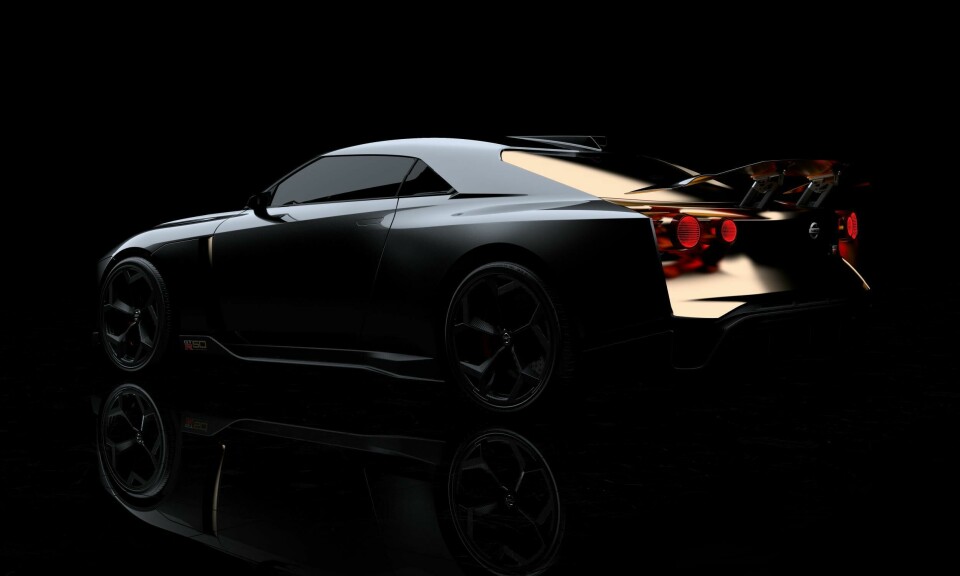
Nissan GT-R 50 by ItalDesign celebrates two golden anniversaries
Godzilla puts on a sharp new suit, sewn together by legendary Italians
In 1968, two significant things happened in the automotive world. In Feburary, Giorgetto Giugiaro and Aldo Mantovani founded Studi Italiani Realizzazione Prototipi S.p.A, which soon became known as ItalDesign.
Then in October, halfway around the world, Prince Motor Company used the Tokyo Motor Show to unveil a new high-performance version of its Skyline 2000 GT sports saloon with a racing-derived six-cylinder engine, to go on sale the following year. To be sold domestically through its ‘Nissan’ group of dealers, it was accordingly christened the Nissan Skyline 2000 ‘GT-R’.

Two legends, born 50 years ago
Both these names went on to become legendary in different automotive circles, and while both have changed dramatically since their inception, they’re nevertheless still going strong in 2018, their 50th year.
Now, the two circles finally intersect, with the GT-R50 by ItalDesign, unveiled today with some shady CGI teaser images.

“How often do you get to ask, ‘What if we created a GT-R without limits,’ and then actually get to build it?” said Alfonso Albaisa, Nissan’s senior vice president for global design. “This is a rare window in time when two big moments intersect: 50 years of Italdesign shaping the automotive world and 50 years of Nissan generating excitement through our iconic GT-R.”
Albaisa also revealed on Instagram that he was approached at the 2017 Geneva show by ItalDesign, who had “dreamed” of doing a GT-R.

2017 Nissan GT-R NISMO N-ATTACK
Nissan is clear that this is not a new-generation platform, meaning the GT-R50 is based on the current R35 – which itself has already had its 10th anniversary in continuous production. They also assert that, while ItalDesign have “developed, engineered and built” the car – we presume they mean the new body and interior in particular – the main design work was carried out at Nissan Design Europe in London, and Nissan Design America in San Diego, CA.

Nissan 2020 Vision Gran Turismo
Broadly speaking, the appearance is strikingly reminiscent of the NDE-penned 2020 Vision Gran Turismo concept from 2014, but with the proportions of the production GT-R that hides beneath.

The nose is multi-layered, with a contrast-finish ‘frame’ containing the usual black plastic structure and grilles/intakes that also sit there in the Gundam-inspired nose of the standard car. Above that sit much skinnier, more intricate LED headlights, calling to mind the ones found on the original 2001 GT-R Concept that started the R35’s origin story.
Beneath all of this, the more aggressive front splitter runs ‘through’ the snowflake-esque five-spoke 21-inch front wheel and into a side skirt with a GT-R50 emblem on it, before slimming down under the doors.

Along the side, the area behind the front wheel has been smoothed down, with the bone line running from the front wheel up to sit at the base of the rear pillar (instead of all the way to the tail). The rear haunch is emphasised more, with a separate bone line fading in behind the door handle to pull the body smoothly outwards, and then back in again to terminate at the angular tail.
The roof is 54mm lower than standard, while the subtly reshaped DLO appears to have narrowed with it.

The rear is the most dramatic area of the car, partly because it’s all in a contrasting gold paint finish. The partially suspended hollow tail light arrangement, with the iconic four red rings, carries over from the 2020 Vision GT – albeit smaller here – with a pop-up rear wing above that can sit down onto them to be flush with the gunmetal bodywork on either side.

The way the surfacing works around the sharply tapered rear window (sat behind a more sculpted roof with a short tail fin) suggests that a layer has been cut away from the rear deck and fascia to reveal the gold underneath. Naturally for a high-performance car, the rear apron is an enormous carbonfibre aero device, with two exhaust pipes nestled in the outer edges thereof.

Inside, the large screen that so befitted the Japanese robo-rocket has disappeared, replaced by angular physical controls and trapezoidal air vents. Furthermore, the standard analogue instruments ahead of the driver have been replaced by a rather retro LCD display – which, while very racecar-y, feels like a slight step backwards after a decade of high-def Polyphony-designed graphics…

The lines and surfaces across the all-new dash are clean and mostly understated, trimmed in carbonfibre and alcantara on the dash and centre console, with leather in the seats and gold-coloured edging. On the doors, a leather branch pokes through the sculpted wall of carbonfibre to create the arm rest.
The gear knob for the 6-speed DCT appears to be the standard item, and the fact that it now looks somewhat incongruous gives context to how comprehensively the interior has been changed.

The GT-R50 is based on the hardcore NISMO version of the GT-R, with its GT3-spec turbochargers and stiffer bodyshell. Mechanically, the engine has been given an extra 120 horsepower by strengthening and enlarging vital components, bringing the total to a punchy 720hp at 7100rpm, with 575lb/ft of torque to go with it.
The transmission has accordingly been made tougher to suit this level of power and performance that the naturally-aspirated 1969 original just would not recognise. Handling is adjusted on the fly by new active dampers.

One thing that’s not entirely clear is what this project ‘means’ – is it a one-off concept car, or will there be a handful on the streets one day? Albaisa described it as an “ultra-limited prototype,” which could potentially go either way but does lean towards suggesting limited production.
We do know that the GT-R50 by ItalDesign will appear in reality next month, somewhere in Europe. We shall endeavour to be there.
(click through the gallery for more)



